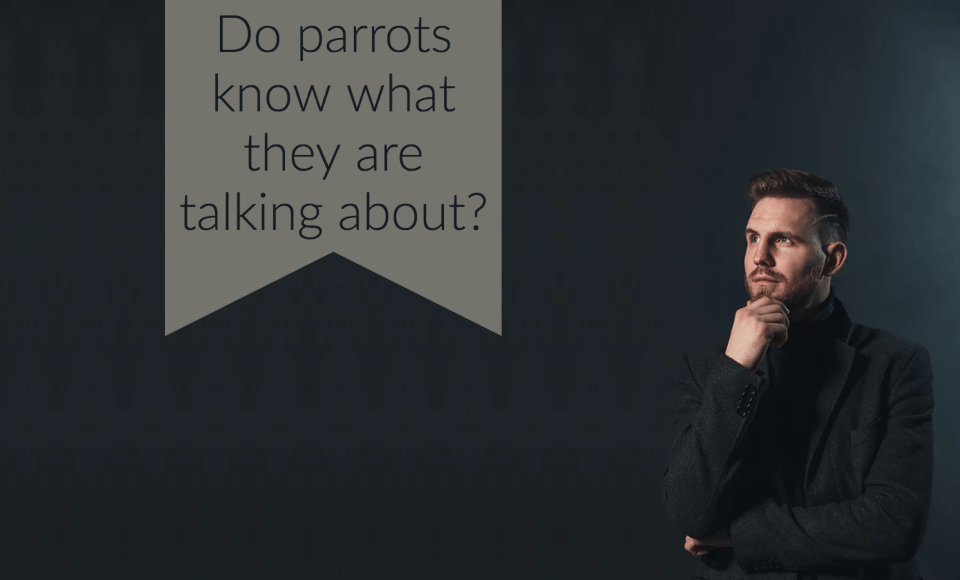Out of all the bird species around the globe, there are someknown to have the ability to talk, and these talking birds could learn up to a hundred words. One famous example of a talking bird is the parrot.
Parrots are a vast group of birds mostly found in tropical and subtropical regions. They usually have a strong, curved bill and plumage with multiple colors. One of the most notable features of parrots is their ability to talk, which we are going to look into further in this article.
Most of us probably already seen a parrot; we might even hear them talk.However, do parrots know what they are saying? Is it possible for humans to have a conversation with parrots? Or do they only know how to talk our language without comprehending? Several questions may arise just in understanding this unique feature of parrots.
How can parrots talk?
Parrots have the ability to talk because of their unique voice box. In humans, we have our voice box – called the larynx – located above the trachea and lungs. When we speak, we release air into our mouths, which passes through the larynx to create sound. The sound made by the larynx will pass through the mouth, wherein we shape the sound to produce words.
However, parrots have their voice box located below their trachea – this is called the syrinx. Unlike humans, parrots have two identical voice boxes that work independently. They produce the sound, as well as shape it to create words in their voice box. They can do this because they have the ability to control their vocal muscles; thus, producing words. If you could notice that most birds, including the parrot, have a fix-shaped bill, that is why they cannot produce words in their mouths. They talk using their voice box.
Do parrots know what they are saying?
Now that we know how parrots talk let us now find out if they are comprehending the words they are saying. If we try to observe a parrot, we can notice that they have good imitating skills. They can spit out a word precisely, and surprisingly, they could also imitate not just words, but also unique sounds.
Usually, parrots don’t understand the words they are saying although they are brilliant birds and could even be as smart as a five-year-old kid if appropriately trained.Most of the time, they just mimic their owner or trainer’s words just to fit in. Because naturally, parrots live in flocks if they are in the wild. When they are with their flocks, they are fond of making bird sounds as their way of communication. However, if they tend to live in a person’s house as a pet, then they would naturally learn to mimic the person’s words as their way of communication.
Interestingly, parrots are very friendly and communicative birds. From the day they are born, they are hardwired to produce sounds and communicate with each other. That is why when they are with humans; they tend to copy their speech.
Moreover, if the parrot is well-trained, it could learn the meaning of some words, answer simple questions like their favoritecolor, and even count up to eight.
Interesting facts about parrots
When we think about parrots, we could already imagine its appearance in our minds. Surprisingly, despite the typical looks of parrots, it is a group of birds that has roughly 372 different species. All of these species vary in their plumage color, size, bill, and other unique features.
Another exciting characteristic of parrots is their long life-span. Depending on the species, some parrots live shorter, while some could live for more than eighty years. The oldest parrot in the world is Charlie, which is 114 years old. Charlie is the oldest parrot known to date and probably the most famous. She is not just any ordinary parrot since she was the pet of the former prime minister of the United Kingdom – Winston Churchill.
One parrot speciesis flightless, called the Kakapo or the owl parrot. This parrot is endemic in New Zealand and lives on the ground. They are a bit large compared to other parrots, and they have yellow-green plumage. Experts consider the Kakapo to be endangered, with only roughly 130 known to exist as of 2010.
